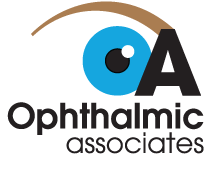Overview
Our bodies undergo many changes as we age, and our eyes are no exception. Some of these changes begin in our 40s; others start to impact vision and eye health in our 60s and beyond. You may barely recognize these changes at first – perhaps you are holding books farther away from your eyes, or you are selecting blue socks when you think they are black. As the massive baby boomer generation ages, eye care professionals see more of these problems. While you may not be able to prevent most aging-related eye problems, the good news is that many are easy to treat.
Routine eye exams are your best defense for identifying and treating age-related eye conditions early before they become serious. It's crucial to be attentive to your eyes because vision impairment and blindness are among the top five causes of disability in older adults. Regular vision screenings and eye exams can also detect many other severe medical conditions, including heart disease, diabetes, inflammation, and cognitive deterioration and dementia.
The flexibility of the clear, curved lens at the front of your eye helps you see at different distances. However, the lens stiffens with age. Changes, such as presbyopia (farsightedness), are perfectly normal, not associated with any disease process and can be remedied with easy solutions, like reading glasses. The lens can also get cloudy as you get older. By age 75, more than half of us will have cataracts. This common condition is corrected with cataract surgery.
Many of us, however, will experience more serious age-related eye diseases that can significantly affect our quality of life and even lead to blindness if not treated. These include glaucoma, age-related macular degeneration and diabetic retinopathy.
Healthy behaviors that reduce your risk for long-term diseases, like heart disease and cancer, also protect your eyesight. These include not smoking, eating a healthy diet, and controlling conditions like diabetes and high blood pressure.
Structural Changes in the Eye
Changes in our eye structures as we grow older cause some issues that impact the aging eye. These changes include:
Reduced pupil size
As we age, the muscles that control pupil size and reaction to light will lose some strength, causing the pupils to become smaller and less responsive to changes in light. That is why people in their 60s often need more light (either natural light or lamps) to read comfortably. Smaller pupils also make it more difficult to see at night; for this reason, many older adults prefer to avoid night driving. Older adults are also often more sensitive to bright sunlight or glare. Specific photochromatic lenses or anti-reflective coating can address these issues.
Loss of peripheral vision
The size of our visual field decreases as we age, particularly when we reach our 70s and 80s, which can pose serious problems while driving. It's critical to be aware of this change and to turn your head both ways when negotiating intersections.
Decreased color vision
Cells in the retina that are responsible for normal color vision can decline in sensitivity as we age. Color will be less bright and the contrast between colors can be less noticeable. While this is not a serious condition, be sure to mention it to your eye care professional. Cataracts can also be responsible for decreased color vision and are easy to fix with surgery.
Dry eyes
While dry eyes can result from many factors, this condition tends to increase as we age, particularly for women after menopause. In general, our bodies produce fewer tears as we get older. Consult your eye care professional if you begin to experience burning, stinging or another eye discomfort.
Vitreous detachment
As we age, the gel-like substance in our eye begins to liquefy and pull away from the retina, causing symptoms like floaters and flashes. The condition is called vitreous detachment and is usually harmless. However, floaters and flashes can be a sign of a detached retina, a much more serious condition that can lead to blindness if not treated promptly. Consult with your eye doctor immediately if you have these symptoms.
Cosmetic Eye Changes
Age can also impact the muscles and skin of your upper and lower eyelids. The problem may affect your appearance only, or it can interfere with vision or cause eye irritation. Talk to your doctor about your concerns about aging eyelids.



